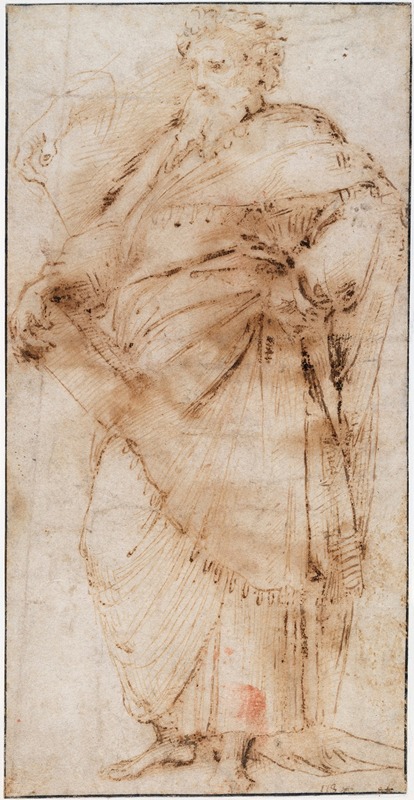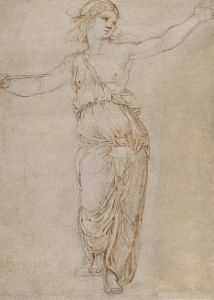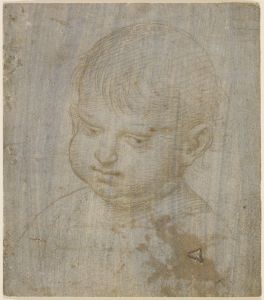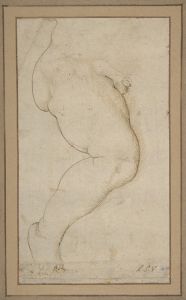
A Standing Philosopher and Hand Detail
A hand-painted replica of Raphael’s masterpiece A Standing Philosopher and Hand Detail, meticulously crafted by professional artists to capture the true essence of the original. Each piece is created with museum-quality canvas and rare mineral pigments, carefully painted by experienced artists with delicate brushstrokes and rich, layered colors to perfectly recreate the texture of the original artwork. Unlike machine-printed reproductions, this hand-painted version brings the painting to life, infused with the artist’s emotions and skill in every stroke. Whether for personal collection or home decoration, it instantly elevates the artistic atmosphere of any space.
Raphael, an Italian painter and architect of the High Renaissance, is renowned for his exquisite artistry and contributions to the art world. Among his numerous works, "A Standing Philosopher and Hand Detail" is a lesser-known piece that showcases his skill in capturing human form and expression. This artwork is part of Raphael's preparatory studies, which he often created as part of his meticulous process for larger compositions.
Raphael, born Raffaello Sanzio da Urbino in 1483, was a master of drawing and painting, and his works are celebrated for their clarity, composition, and visual achievement of the Neoplatonic ideal of human grandeur. He was heavily influenced by his predecessors, Leonardo da Vinci and Michelangelo, and he synthesized their techniques with his own unique style.
"A Standing Philosopher and Hand Detail" is believed to be a study for one of Raphael's larger projects, possibly related to his frescoes in the Vatican. These frescoes, particularly "The School of Athens," are among his most famous works and depict a gathering of great philosophers and scientists from classical antiquity. Raphael's studies often focused on individual figures or specific details, such as hands, to perfect the anatomy and gestures that would later be incorporated into his larger compositions.
The drawing of "A Standing Philosopher" likely served as a preparatory sketch, allowing Raphael to explore the posture, attire, and demeanor of a philosopher figure. The attention to detail in the hand study reflects Raphael's dedication to capturing the subtleties of human anatomy and movement. Hands, often considered one of the most challenging aspects of human anatomy to depict accurately, were a frequent subject of study for Renaissance artists, and Raphael was no exception.
Raphael's drawings are characterized by their fluid lines and precise attention to detail. His ability to convey emotion and intellect through simple sketches is a testament to his mastery. The study of hands, in particular, demonstrates his understanding of how gestures can communicate complex ideas and emotions, a skill that is evident in his finished paintings.
While "A Standing Philosopher and Hand Detail" may not be as widely recognized as some of Raphael's other works, it provides valuable insight into his artistic process and the meticulous preparation that underpinned his masterpieces. These studies are crucial for understanding how Raphael achieved the harmonious compositions and lifelike figures that define his work.
Raphael's legacy extends beyond his paintings and drawings; his influence on the art world is profound. His techniques and stylistic innovations were emulated by subsequent generations of artists, and his works continue to be studied and admired for their beauty and technical prowess. Raphael's untimely death at the age of 37 in 1520 marked the end of an era, but his contributions to art endure, cementing his place as one of the great masters of the Renaissance.


















